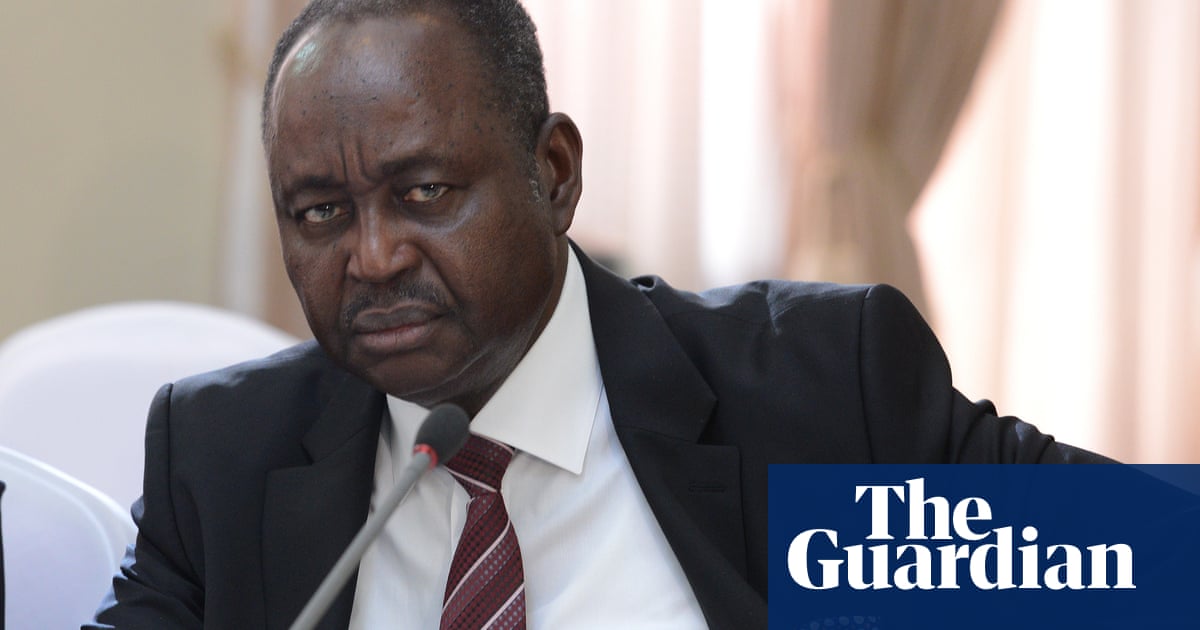Arrest warrant issued for Central African Republic’s former president over crimes against humanity
Arrest warrant issued for Central African Republic’s former president over crimes against humanity The Guardian


Arrest Warrant Issued for Former President of Central African Republic

A UN-backed court has issued an arrest warrant for the Central African Republic’s former president François Bozizé over possible crimes against humanity committed by the nation’s military between 2009 and 2013.
The alleged crimes include murder, enforced disappearance, torture, rape and other inhumane acts, according to the special criminal court (CPS), a hybrid jurisdiction located in the capital Bangui with Central African and foreign magistrates.
Sustainable Development Goals (SDGs) Implications:
- Goal 16: Peace, Justice and Strong Institutions
Bozizé, 77, seized power in Central Africa in 2003 in a coup before being overthrown 10 years later. He now heads the country’s main rebellion and has been in exile in Guinea-Bissau since March 2023.
The international warrant was issued on 27 February but only announced on Tuesday, according to the CPS, which was set up in 2015 with UN sponsorship. The CPS is calling for Guinea-Bissau’s cooperation to “arrest” and “hand over the suspect”.
The court is in charge of investigating war crimes committed since 2003 in the country, which has endured civil wars and authoritarian regimes since independence from France in 1960.
The court’s magistrates are probing possible “crimes against humanity” committed by Bozizé’s presidential guard between February 2009 and March 2013 at a civilian prison and at a military training facility in the central town of Bossembélé.
The judges concluded there was “serious and consistent evidence against [Bozizé], likely to incur his criminal liability, in his capacity as hierarchical superior and military leader”.
Implications for SDGs:
- Goal 16: Peace, Justice and Strong Institutions
Amnesty International said in a statement that the warrant “constitutes an encouraging step in the quest for justice for the victims of numerous crimes committed in the Central African Republic.” It called on Guinea-Bissau to turn Bozizé over “without delay” to the Central African authorities.
A civil war has plagued the former French colony since a Muslim-dominated armed coalition, Seleka, ousted Bozizé in 2013.
Bozizé set up militias dominated by Christians and animists, known as anti-Balakas, to regain power.
Thousands of civilians were killed and both sides have been accused of war crimes and crimes against humanity by the United Nations.
The conflict lost intensity after 2018, but the country still suffers bouts of violence and remains deeply poor.
Bozizé leads a new alliance of rebel groups called the Coalition of Patriots for Change (CPC), formed in December 2020 in a bid to overthrow his successor, Faustin-Archange Touadéra.
But Touadéra brought in fighters from Russia’s Wagner mercenary group and Russian operatives to push them away from Bangui.
Bozizé was sentenced in absentia in September to forced labour for life for conspiracy, rebellion and murder.
Implications for SDGs:
- Goal 16: Peace, Justice and Strong Institutions
SDGs, Targets, and Indicators
| SDGs | Targets | Indicators |
|---|---|---|
SDG 16: Peace, Justice, and Strong Institutions |
|
|
SDG 5: Gender Equality |
|
|
Analysis
1. Which SDGs are addressed or connected to the issues highlighted in the article?
The issues highlighted in the article are connected to SDG 16: Peace, Justice, and Strong Institutions and SDG 5: Gender Equality.
2. What specific targets under those SDGs can be identified based on the article’s content?
Based on the article’s content, the specific targets that can be identified are:
– Under SDG 16:
– Target 16.1: Significantly reduce all forms of violence and related death rates everywhere
– Target 16.3: Promote the rule of law at the national and international levels and ensure equal access to justice for all
– Target 16.4: By 2030, significantly reduce illicit financial and arms flows, strengthen the recovery and return of stolen assets, and combat all forms of organized crime
– Target 16.5: Substantially reduce corruption and bribery in all their forms
– Target 16.6: Develop effective, accountable, and transparent institutions at all levels
– Under SDG 5:
– Target 5.2: Eliminate all forms of violence against all women and girls in the public and private spheres, including trafficking and sexual and other types of exploitation
– Target 5.3: Eliminate all harmful practices, such as child, early, and forced marriage and female genital mutilation
– Target 5.5: Ensure women’s full and effective participation and equal opportunities for leadership at all levels of decision-making in political, economic, and public life
3. Are there any indicators mentioned or implied in the article that can be used to measure progress towards the identified targets?
Yes, there are indicators mentioned or implied in the article that can be used to measure progress towards the identified targets. These indicators include:
– Indicator 16.1.1: Number of victims of intentional homicide per 100,000 population, by sex and age
– Indicator 16.3.1: Proportion of victims of violence in the previous 12 months who reported their victimization to competent authorities or other officially recognized mechanisms for the prevention and redress of violence and their families
– Indicator 16.4.1: Total value of inward and outward illicit financial flows (in current United States dollars)
– Indicator 16.5.1: Proportion of persons who had at least one contact with a public official and who paid a bribe to a public official, or were asked for a bribe by those public officials, during the previous 12 months
– Indicator 16.6.1: Primary government expenditures as a proportion of original approved budget, by sector (or by budget codes or similar), disaggregated by sex, and updated annually
– Indicator 5.2.1: Proportion of ever-partnered women and girls aged 15 years and older subjected to physical, sexual, or psychological violence by a current or former intimate partner in the previous 12 months, by form of violence and by age group
– Indicator 5.3.1: Proportion of women aged 20-24 years who were married or in a union before age 15 and before age 18
– Indicator 5.5.1: Proportion of seats held by women in national parliaments and local governments
SD
Copyright: Dive into this article, curated with care by SDG Investors Inc. Our advanced AI technology searches through vast amounts of data to spotlight how we are all moving forward with the Sustainable Development Goals. While we own the rights to this content, we invite you to share it to help spread knowledge and spark action on the SDGs.
Fuente: theguardian.com

Join us, as fellow seekers of change, on a transformative journey at https://sdgtalks.ai/welcome, where you can become a member and actively contribute to shaping a brighter future.







